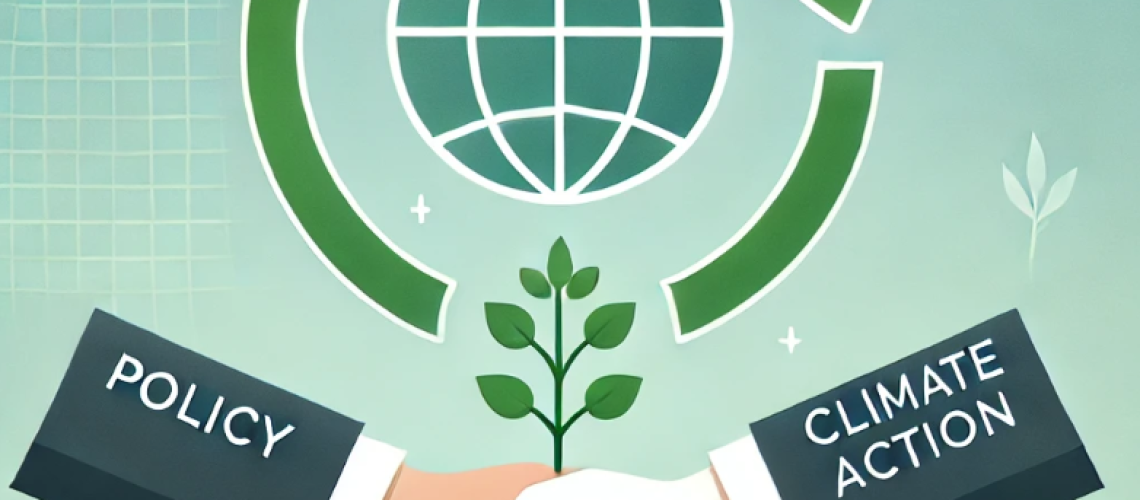Climate change is one of the most pressing challenges of our time. Global leaders and policymakers have proposed various initiatives and strategies to address the issue, but the question remains: are these policies sufficient to prevent the dire consequences that scientists predict? As we move closer to 2030, the year by which many climate goals are set, it’s critical to understand the reality of our situation and how grassroots action can complement and amplify policy efforts.
In this post, we’ll explore the strengths and weaknesses of recent climate policies, particularly those proposed by Vice President Harris and former President Trump. We’ll also delve into the implications of the predicted two-degree Celsius rise in global temperatures and what it means for our future. Most importantly, we’ll discuss how each of us can play a role in educating, equipping, and inspiring our communities to take meaningful action on climate change.
The Climate Policy Landscape: A Comparative Overview
Climate policies, whether they focus on renewable energy, carbon emissions, or environmental justice, are crucial for setting the framework within which nations and communities operate. They provide guidelines, allocate resources, and establish targets for reducing our collective carbon footprint. However, not all policies are created equal, and their effectiveness can vary widely based on their design, implementation, and the political will behind them.
Vice President Harris’ Climate Initiatives
Vice President Harris has put forward a series of climate initiatives that emphasize accelerating the transition to clean energy. Her plan includes substantial investments in renewable energy sources like solar and wind, alongside efforts to improve energy efficiency in buildings and infrastructure. A significant aspect of her approach is environmental justice—ensuring that communities disproportionately affected by climate change, often marginalized or low-income, receive the support they need to adapt and thrive.
Harris’ initiatives also focus on bolstering resilience against the impacts of climate change. This includes strengthening infrastructure to withstand extreme weather events and promoting practices that reduce vulnerability to climate-related disasters. By prioritizing social equity and economic development alongside environmental goals, Harris’ plan aims to create a more inclusive and sustainable future.
Trump’s Climate and Energy Policies
In contrast, former President Trump’s approach to climate and energy policy emphasizes energy independence and economic growth. His proposals focus on expanding domestic energy production, including fossil fuels such as oil and natural gas. Trump’s policies also include advancing energy technologies and streamlining regulations to reduce the burden on businesses and promote innovation.
While Trump’s plan differs from Harris’ in its approach, it represents a significant effort to address the energy needs of the nation. By prioritizing economic growth and energy security, Trump’s policies aim to ensure that the United States remains competitive in the global energy market.
The 2030 Prediction: What a Two-Degree Rise Means for Our Future
As we look ahead to 2030, scientists have warned that global temperatures could rise by two degrees Celsius if current trends continue. This seemingly small increase can have profound effects on our planet and our way of life. To understand the urgency of the situation, it’s essential to grasp what a two-degree rise entails and why it matters.
Environmental Impacts
A two-degree Celsius rise in global temperatures is expected to exacerbate the frequency and severity of extreme weather events, such as hurricanes, droughts, and heatwaves. These events can lead to devastating consequences for ecosystems, agriculture, and human health. For instance, rising temperatures can disrupt crop yields, leading to food shortages and increased prices, particularly in vulnerable regions.
Additionally, a two-degree increase is likely to accelerate the melting of polar ice caps and glaciers, contributing to rising sea levels. Coastal communities around the world could face more frequent and severe flooding, displacing millions of people and causing significant economic damage.
Social and Economic Consequences
The social and economic impacts of a two-degree rise are equally concerning. As climate-related disasters become more common, the cost of recovery and adaptation will strain public and private resources. Vulnerable populations, including those in developing countries and marginalized communities, will be disproportionately affected, exacerbating existing inequalities.
Moreover, the strain on natural resources, such as water and arable land, could lead to conflicts over access and control. This could further destabilize regions already facing political or social challenges, leading to increased migration and humanitarian crises.
The Limits of Policy: Why Grassroots Action is Essential
While climate policies play a crucial role in guiding national and international efforts to address climate change, they have their limitations. Policies are often constrained by political considerations, economic interests, and the need for compromise. As a result, even the most well-intentioned policies may fall short of what is needed to fully address the climate crisis.
The Need for Grassroots Action
This is where grassroots action becomes indispensable. While policies set the framework, it is the actions of individuals and communities that bring about real, lasting change. By educating, equipping, and inspiring others, we can complement policy efforts and push for more ambitious and effective solutions.
Grassroots movements have historically played a vital role in driving social and environmental change. From the civil rights movement to the fight for clean air and water, ordinary people coming together to demand better has often been the catalyst for significant policy shifts. In the context of climate change, grassroots action can take many forms, from local sustainability initiatives to global campaigns that raise awareness and mobilize support.
Bridging the Gap Between Policy and Reality
One of the key challenges in addressing climate change is bridging the gap between policy goals and the reality on the ground. Policies can set ambitious targets for reducing carbon emissions, but without widespread public support and engagement, these targets may be difficult to achieve. Grassroots action helps to bridge this gap by building momentum and creating a culture of sustainability that makes policy goals more attainable.
For example, community-led renewable energy projects can demonstrate the feasibility and benefits of transitioning to clean energy, inspiring others to take similar steps. Educational programs can raise awareness about the impacts of climate change and the importance of reducing our carbon footprint. By equipping people with the knowledge and tools they need to take action, grassroots movements can help turn policy aspirations into reality.
Educate, Equip, and Inspire: Your Role in Changing the Course
At 2030 or Bust, we believe that everyone has a role to play in addressing climate change. While policies provide the framework, it is up to each of us to take action and make a difference. By educating ourselves and others, equipping our communities with the tools and resources they need, and inspiring change through our actions, we can help create a more sustainable future.
Educate
Education is the foundation of any successful movement. By understanding the science behind climate change, the potential impacts of a two-degree rise in global temperatures, and the strengths and weaknesses of current policies, we can make informed decisions and advocate for effective solutions. But education doesn’t stop with us—it’s also about sharing that knowledge with others and empowering them to take action.
Consider hosting workshops, webinars, or discussion groups to raise awareness about climate change in your community. Share resources and information on social media to reach a broader audience. By educating others, you help build a network of informed and engaged individuals who are ready to take on the challenges ahead.
Equip
Equipping individuals and communities with the tools and resources they need to take action is another crucial step. This can include providing access to renewable energy technologies, offering training on sustainable practices, or supporting local initiatives that promote environmental stewardship.
For example, you might start a community garden to promote local food production and reduce carbon emissions associated with transporting food. Or, you could organize a neighborhood clean-up to address pollution and raise awareness about the importance of reducing waste. By equipping people with practical solutions, you empower them to make a tangible impact on their environment.
Inspire
Inspiration is the driving force that turns knowledge and tools into action. By leading by example and sharing success stories, you can inspire others to join the movement and take their own steps toward sustainability.
One way to inspire others is by participating in or organizing events that showcase the positive impact of grassroots action. Whether it’s a community renewable energy project, a successful recycling program, or a local campaign to protect a natural area, these examples can motivate others to get involved and make a difference.
You can also inspire others by sharing your own journey toward sustainability. Talk about the challenges you’ve faced, the successes you’ve achieved, and the lessons you’ve learned along the way. By being open and authentic, you can connect with others on a personal level and encourage them to take their own steps toward a more sustainable future.
The Power of Collective Action
As we approach 2030, the need for collective action has never been greater. While climate policies provide a roadmap for addressing the crisis, it is up to each of us to ensure that we reach our destination. By educating, equipping, and inspiring our communities, we can complement policy efforts and create a powerful grassroots movement that drives real change.
Collective action is about more than just individual efforts—it’s about coming together as a community to achieve common goals. When we work together, we amplify our impact and create a ripple effect that extends far beyond our immediate circles. By joining forces with others who share our commitment to sustainability, we can build a movement that is greater than the sum of its parts.
Taking the First Step
If you’re ready to get involved and make a difference, there are many ways to take the first step. Start by educating yourself and others about the issues at hand. Equip your community with the tools and resources they need to take action. And inspire those around you to join the movement and make their own contributions to a sustainable future.
One practical way to get started is by downloading our app, which provides a wealth of resources and information to help you take meaningful action on climate change. Whether you’re looking for tips on reducing your carbon footprint, ideas for community projects, or ways to advocate for stronger policies, our app has you covered.
Conclusion: Building a Better Future Together

